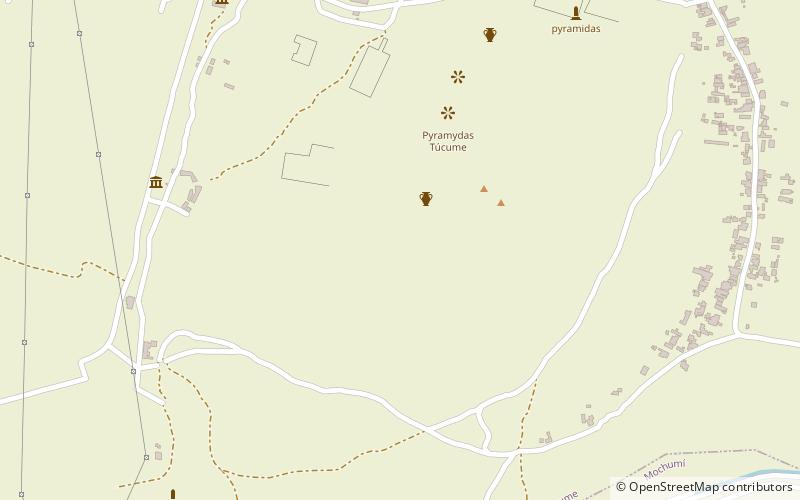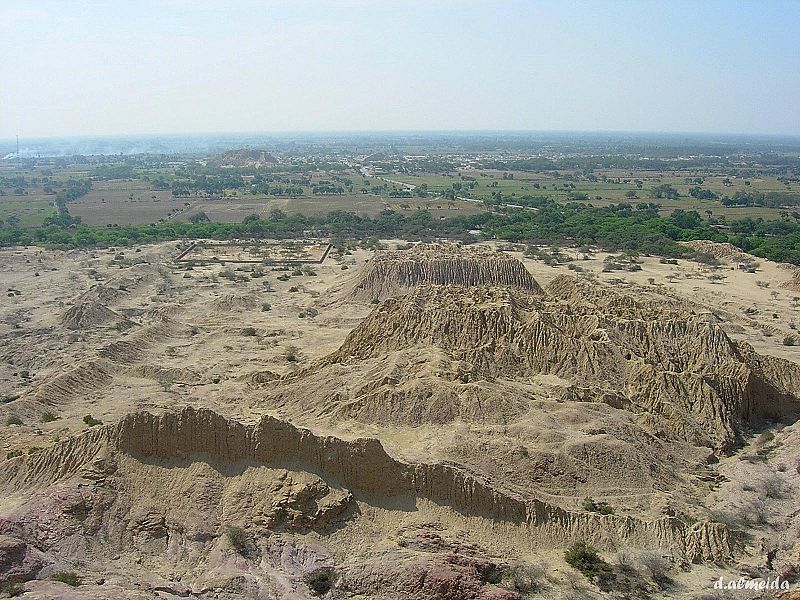Túcume


Facts and practical information
Nestled in the arid landscape of northern Peru, Túcume stands as a testament to the ingenuity and culture of pre-Columbian civilizations. This sprawling archaeological site, often overshadowed by the more famous Machu Picchu, offers a unique glimpse into the past with its array of pyramids, plazas, and terraces.
Túcume, known as the Valley of the Pyramids, is home to 26 major pyramids and mounds that were constructed by the Lambayeque (or Sicán) culture, which flourished in the region from about 800 to 1350 AD. Later, the site became an important administrative and ceremonial center for the Chimú and Inca cultures.
The most prominent structure at Túcume is the Huaca Larga, which is one of the largest adobe structures in the Americas. It spans nearly 700 meters in length, 280 meters in width, and towers to heights of 30 meters. The site's strategic position, overlooking the fertile La Leche River valley, underscores its historical significance as a hub of ancient governance, religion, and commerce.
Archaeologists have unearthed a wealth of artifacts at Túcume, including pottery, textiles, and metalwork, which have shed light on the daily life, religious practices, and social hierarchy of its former inhabitants. The site also features murals depicting various deities and mythical creatures, offering insights into the spiritual world of the ancient Andean people.
Visitors to Túcume can explore the complex network of structures and appreciate the vastness of this once-powerful city. The site also includes a museum that displays many of the artifacts found during excavations and provides detailed information on the history and culture of the region.
Túcume – popular in the area (distance from the attraction)
Nearby attractions include: Batán Grande, Bosque de Pómac Historic Sanctuary.


